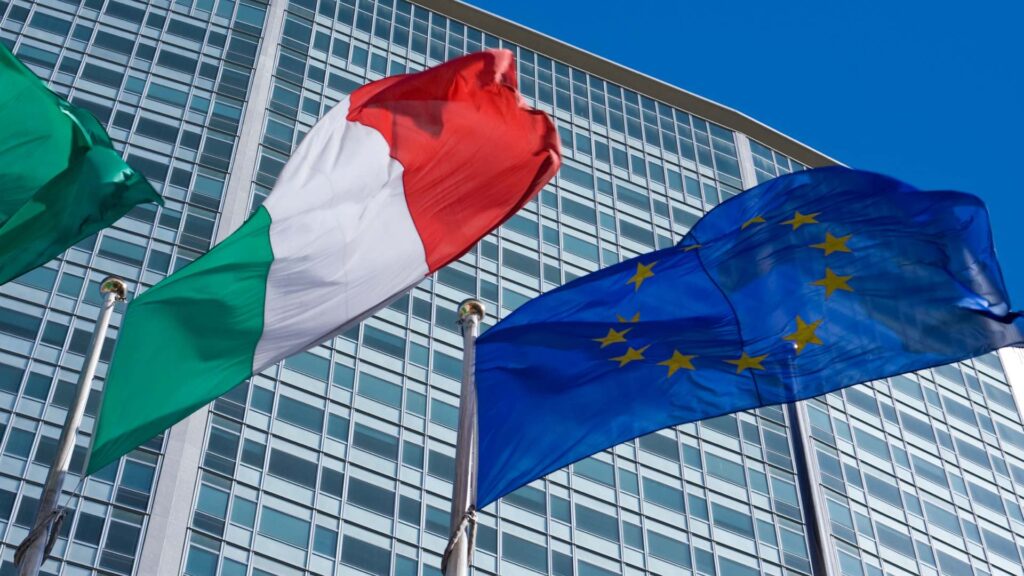Our Guide has been delving into the new 2021-2027 European funds programming for some time. Structural Funds are one of the types of European grants closest to local organisations and therefore most appreciated by many recipients and users of our Guide.
You can learn more about the Structural Funds programming process in theappropriate section of our Guide. We also recommend an interesting e-book specifically dedicated to this subject, offered by theAgency for Territorial Cohesion. Let us now resume the different stages of the process of strategic definition and use of Structural Funds through calls and projects:
Structural funds, stage 1: Community institutions.
At this level they are defined:
a. The multi-year financial framework and the community budget, i.e., the available allocation of funds. Negotiations are now in full swing-you can follow them on the dedicated section of our Guide;
b. the specific Regulations pertaining to each Fund and the common provisions, which govern their operation. They are available in draft form (Commission proposal and European Parliament opinion) and are currently under consideration by the Council. You can follow developments in theappropriate section of our Guide or at these direct links: ERDF | ESF+ | EAFRD | EMFF | INTERREG | common provisions.
The main new features of the new programming proposal are:
- The focus on 5 thematic objectives, replacing the 11 in previous programming and aimed at building a “smarter,” “green,” “connected,” “social,” and “citizen-friendly” Europe;
- A major simplification effort to reduce bureaucracy in the use of the Funds, with facilitated procedures and a more streamlined and uniform body of rules;
- The integration of more instruments into the Structural Funds “family” through the support of new or enhanced complementary instruments (such as InvestEU or the Reform Support Program) and the extension of Structural Funds rules to asylum and migration(AMIF), internal security(ISF) and border and visa management(BMVI) funds;
c. the way the Funds are distributed among member countries. This is a hot topic in the debate among European countries and in the European Council, which is far from over.
Structural Funds, Stage 2: Member States.
At this level they are defined:
a. A Position Paper, which presents the Commission’s recommendations to the country in question. The reference document is the European Commission’s February 2019 country report on Italy;
b. a Partnership Agreement, which presents a detailed country strategy for the use of Structural Funds. The drafting process is already underway and is well documented on the OpenCoesione website, which allows access to all relevant documentation. The debate is organized around a preparatory document and five thematic tables, corresponding to the five proposed objectives of the new Structural Funds programming:
- 1- a smarter Europe(summary | YouTube)
- 2- a greener Europe(summary | YouTube)
- 3- a more connected Europe(summary | YouTube)
- 4- a more social Europe(summary | YouTube)
- 5- a Europe closer to the people(summary | YouTube)
c. NOPs (National Operational Programs), which present strategy, axes, priorities and financing plans for nationally managed Structural Funds. They will be elaborated as the previous phases (Financial Framework, Regulations, Partnership Agreement) move towards their conclusion.
Structural Funds, stage 3: individual regions.
At this level they are defined:
a. A Strategic Document (Unified or Regional, DSU or RSP), which forms the basis for regional programming of Structural Funds. On this aspect, all Italian regions are already moving to prepare the document, with different methods and stages of progress. Some have already published it, at least in a first draft, for example : Lombardy | Veneto | Emilia-Romagna | Tuscany | Umbria | Calabria;
b. ROPs (Regional Operational Programs) that present strategy, axes, priorities and financing plans for nationally managed Structural Funds. They will be elaborated as the previous phases (Financial Framework, Regulations, Partnership Agreement, Strategic Document) move towards their conclusion.
As explained in our section on Structural Funds:
- all these documents are developed through extensive consultation among EU, national and local institutions, civil society and social partners;
- national and regional documents need the approval of the European Commission;
- the NOPs and ROPs represent the end point of the Structural Funds programming process, from which descend the calls open to various national and regional actors.
The 2021-2027 Structural Funds framework is thus gradually beginning to emerge as the 2014-2020 Structural Funds programming draws to a close. The OpenCoesione (Italian) and CohesionData (EU) platforms make it possible to take stock, navigating through data, regions, programs and intervention sectors.




